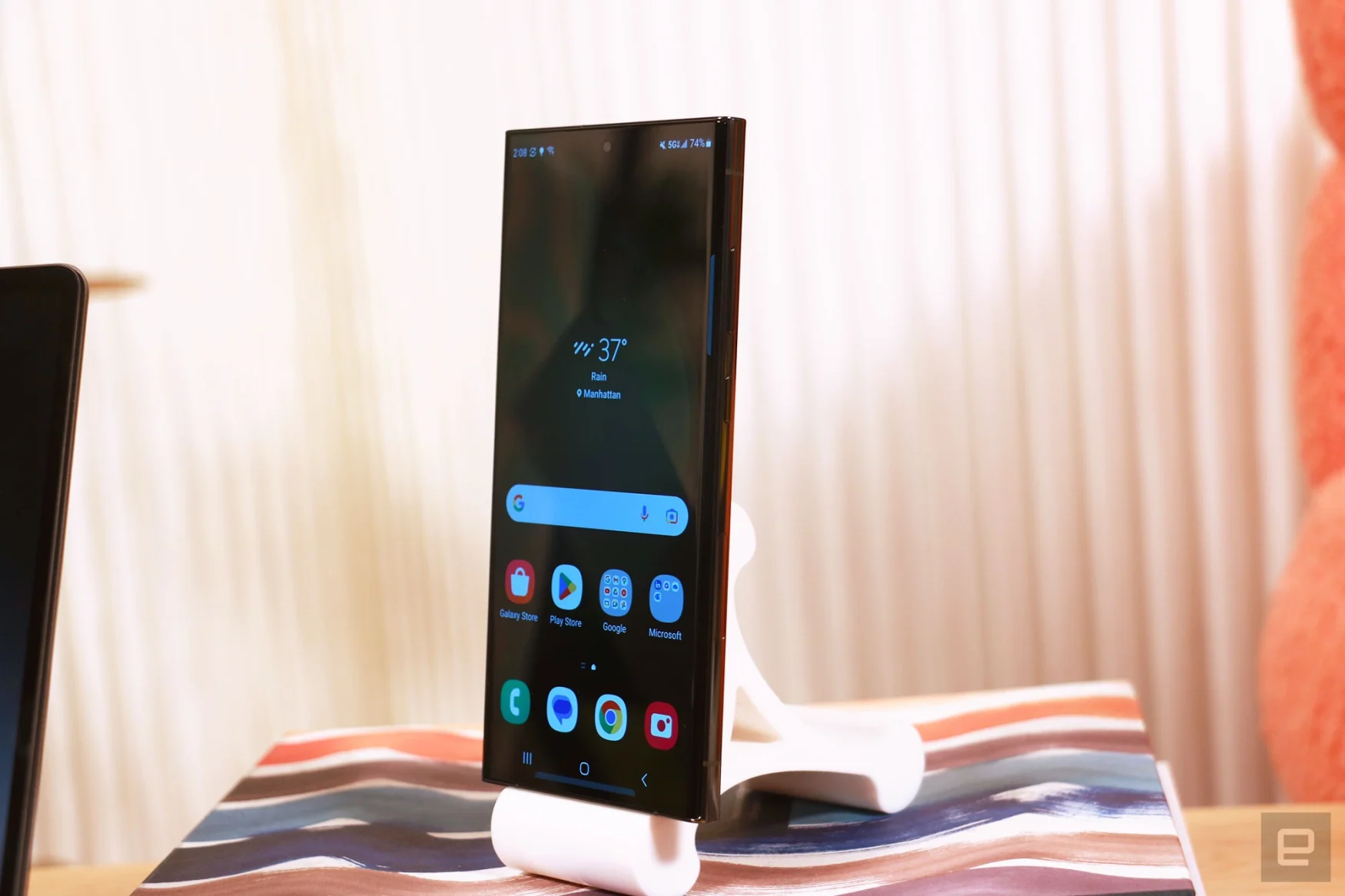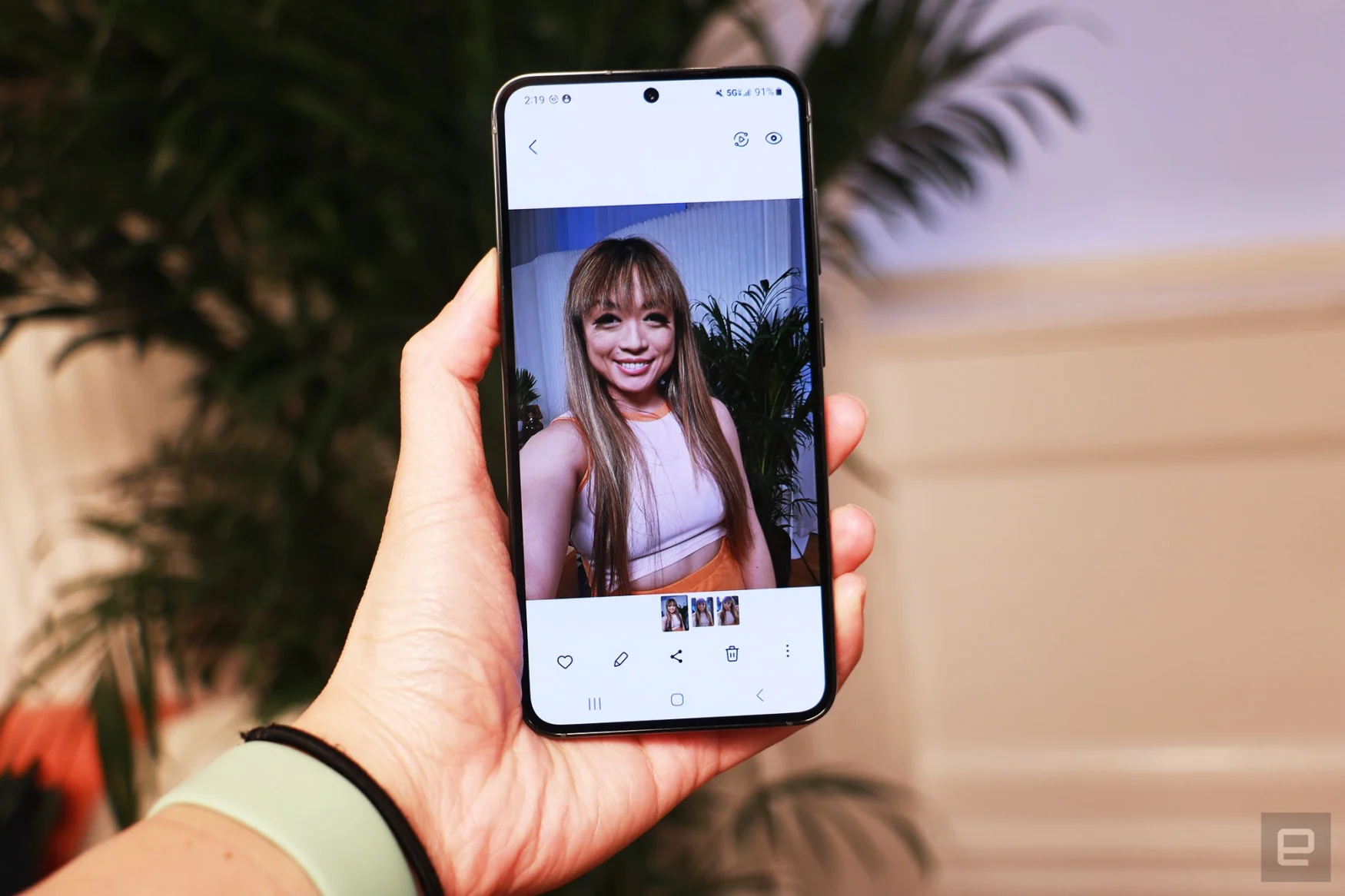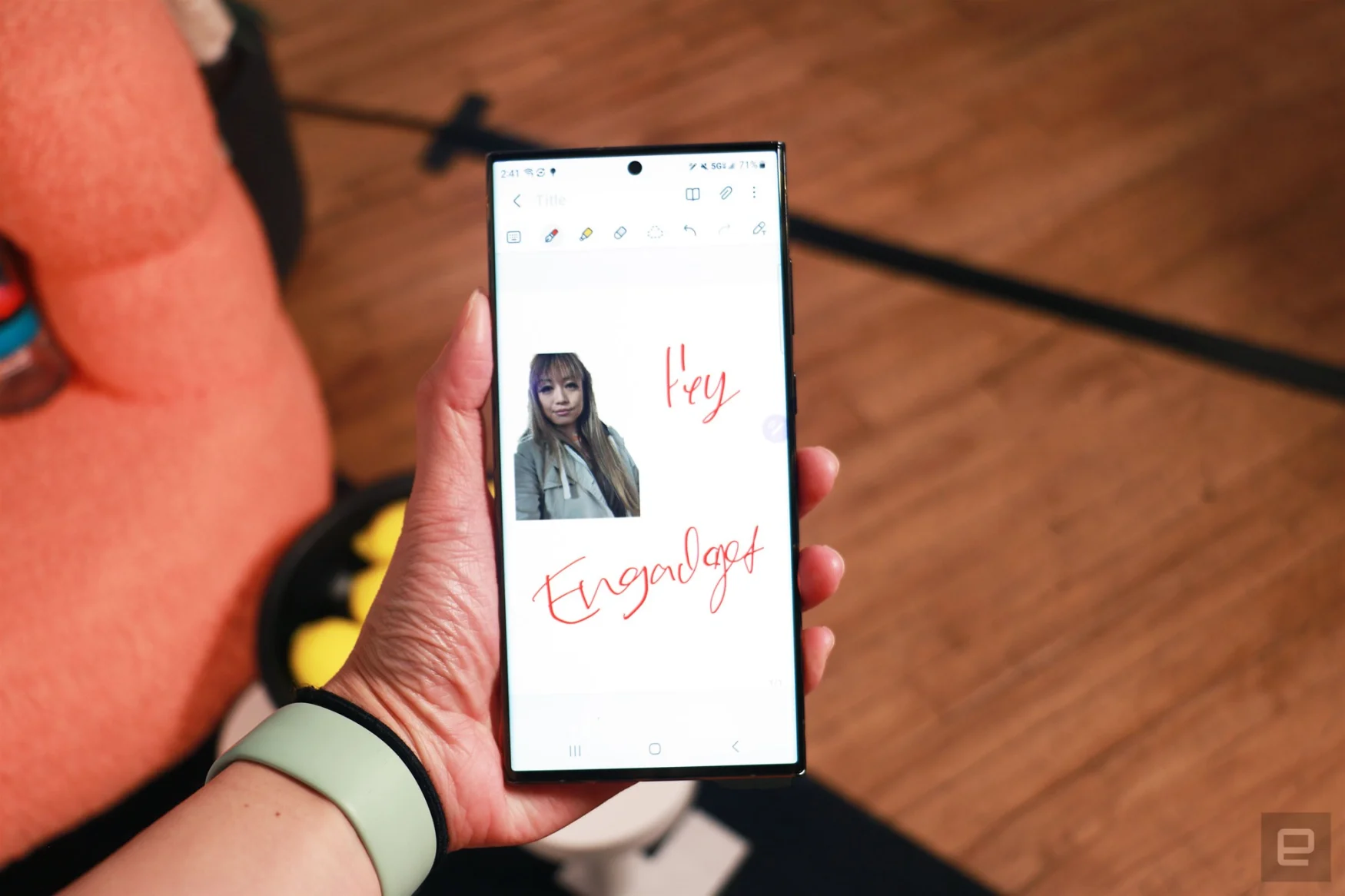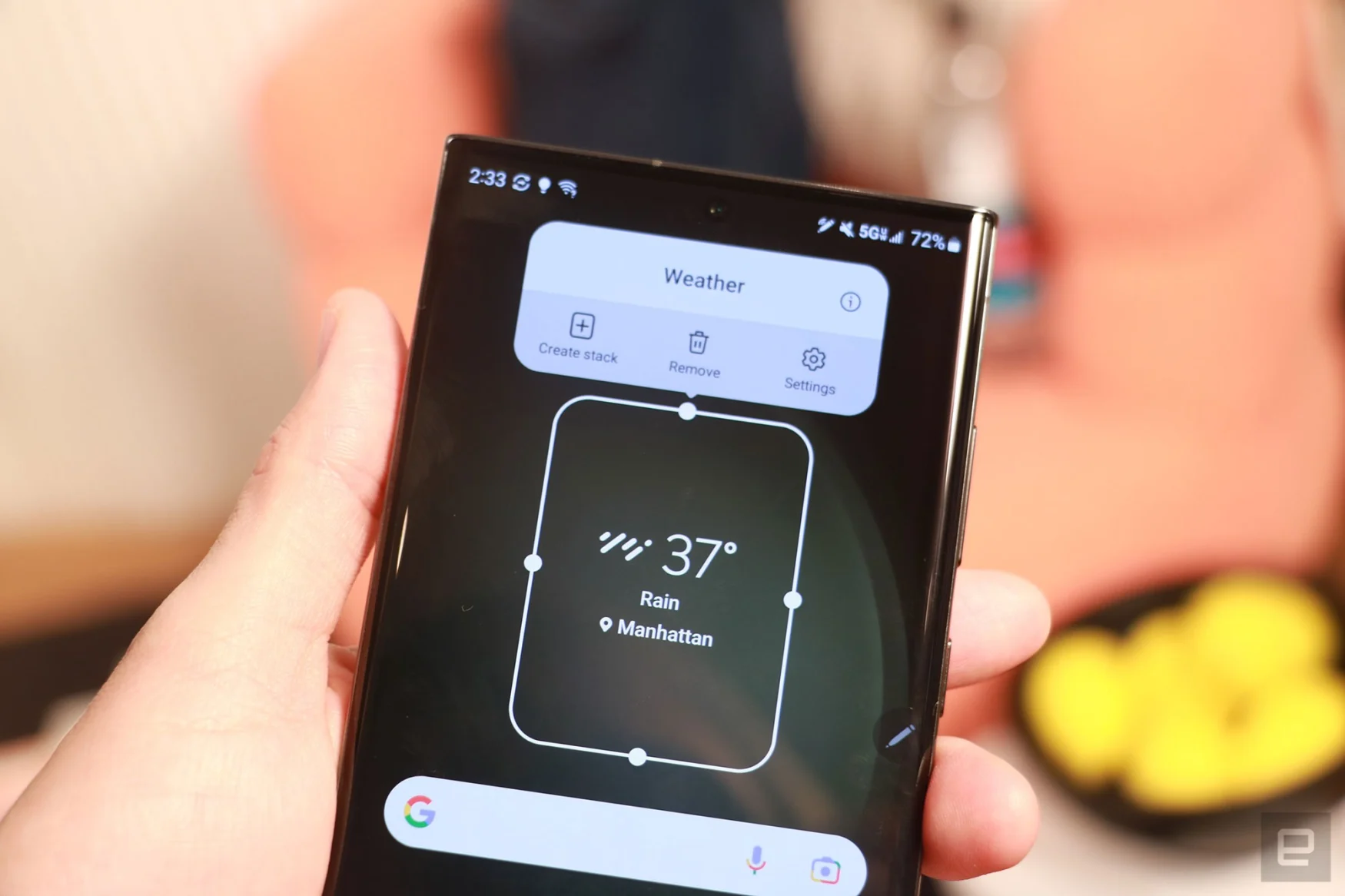Samsung Galaxy S23 Ultra hands-on: A 200MP camera is the biggest update
It’s February and the first major flagship phone launch of 2023 is here. Samsung is launching the new Galaxy S23 series at its Unpacked event in San Francisco today, and this year’s trio of phones are no surprise. While last year’s focus was on the addition of an S Pen slot to the Ultra variant and saying hello to the Note replacement, this time around things feel less monumental.
Most of the changes to the standard S23 and S23 Plus models feel incremental, while the biggest update to the S23 Ultra is a new 200-megapixel rear camera, enhanced selfie shooter and a few software updates. Some other improvements are less obvious, like a tweak in the curvature of the phone’s screen, different materials used in the case and the latest Qualcomm processors. There are also new colors and storage options available, but that’s pretty much it. If you want the details on the regular S23 and S23 Plus, check out what my colleague Mat Smith thought in his hands-on. I am focusing on the S23 Ultra here.
Besides the camera bump, everything about the S23 Ultra feels like a negligible improvement. But that’s not a bad thing and it does mean those who bought last year’s model won’t feel like they’re missing out by not jumping on the new phone.
Design and display
At first glance, unless you have one of the newer colors like green or lavender, the S23 Ultra looks nearly identical to its predecessor. It retains the same boxy shape, though Samsung says it’s reduced the screen edges’ curvature to make it easier to use with the S Pen. The display can also hit up to 1,750 nits of outdoor peak brightness now, though I couldn’t really tell the difference, especially without an S22 Ultra on hand to do a side by side comparison. And even though I continue to struggle using a 6.8-inch screen with just one hand, I was able to reach across the display to hit far-off elements. It just took some effort.
One of Samsung’s focal points for the S23 Ultra is sustainability. Materials like pre-consumer recycled aluminum and glass, as well as post-consumer plastics from discarded fishing nets went into the handset. The S23 Ultra is also the first phone to use Gorilla Glass Victus 2, which the company says offers “heightened durability for long-term use and [was] designed with an average of 22 percent pre-consumer recycled content.” Honestly, I couldn’t tell the difference simply by touch. All I can say is the S23 Ultra felt well-made and wasn’t noticeably heavier or lighter than before.
Cameras
The most significant update to the S23 Ultra is its new 200-megapixel “Adaptive Pixel” rear sensor that Samsung says is a first for its Galaxy family of products. While you will have the option to shoot at 200MP, by default the system uses pixel-binning to deliver brighter, clearer pictures at 12MP. When I used the S23 Ultra to shoot a bowl of lemons at the available options of 200mp, 50MP and the default level, the latter resulted in the best picture. I zoomed in on the peel of the fruit on all three images, and was surprised to see individual pits and fine hairs on the 12MP photo. On the other two, there was barely enough detail to see the skin texture.

Samsung says it also improved its Nightography mode for better images in low light, thanks to a new “AI-powered image signal processing (ISP) algorithm.” Our demo area was very brightly lit and I wasn’t able to access any dark corners to put this claim to the test, so we’ll have to wait till we can run a real-world test to verify how well this works. And though I did capture a quick 8K video at 30 frames per second (up from 24fps before), it’s hard to judge the quality just by playing that footage back on the phone. You’ll likely want to shell out for the new 1TB storage model if you plan on filming a lot of 8K video.
There are some additional improvements to the S23 Ultra’s cameras that I couldn’t test during the hands-on event. The optical image stabilization (OIS)’s range has been doubled, meaning it can compensate for twice the amount of movement in all directions. The processing algorithms have also been updated to, as Samsung says, “carefully reflect a person’s dynamic characteristics” based on details “even down to minute facial features such as hair and eyes.” I don’t really get what that last one means practically and couldn’t see a difference in the few photos I snapped.
I also checked out the S23 Ultra’s new 12-mp selfie camera, which is the same across this year’s lineup. Though the bump in resolution seems like a step up for the two standard models, going to 12-mp might feel like a drop from the S22 Ultra’s 40-mp sensor. But a Samsung rep told me the new sensor is bigger and more advanced, featuring dual-pixel autofocus. They also support Super HDR and can now shoot clips at 60 fps, up from 30 fps before. The few selfies I snapped at the demo came out clear and autofocused quickly, but without a side by side comparison I can’t judge how much better the S23 Ultra is than its predecessor and competitors.

The rest of the Ultra’s rear camera array is the same as last year. In addition to the new 200MP sensor, you’ll find a pair of 10MP telephoto cameras and an ultrawide 12MP option. The Ultra also has a laser autofocus that the regular S23s don’t.
Processor, battery and S Pen
Just like last year, the Ultra is the only model that has an S Pen that tucks away inside the onboard slot. There are no changes to the stylus this year, and making the few sketches and notes I did during my preview felt as smooth as before.
As always, there are loads of things we will need to wait till we can run our full barrage of tests before we can say for sure. For example, all the new S23s are powered by a custom version of Qualcomm’s Snapdragon 8 Gen 2, featuring higher clock speeds than the standard version. The Snapdragon 8 Gen 2 for Galaxy will hit up to 3.3Ghz, which is a whole 100Mhz faster than the standard. But Qualcomm said the improvements include “accelerated performance… in both CPU and GPU frequencies,” and that the chipset is “the fastest Snapdragon ever.” You’ll still get the benefits of the standard Snapdragon 8 Gen 2, like hardware-accelerated ray-tracing for better lighting effects in games.
The S23 line also has a larger vapor cooling chamber to keep the phone from overheating during a gaming marathon, while Samsung says the S23 Ultra’s 5,000mAh battery can last more than 20 percent longer than last year’s model.
Short of installing benchmarks on the demo units at the hands-on, which is kind of a no go, there wasn’t much I could do to test the S23 Ultra’s performance. I installed Survivor.iO and ran through the tutorial and first round, and the phone ran as quickly and smoothly as expected. I did encounter some lag when trying out new OneUI features like picking system-generated themes and switching modes and routines, though.

New OneUI 5.1 features
All three new S23s ship with OneUI 5.1, which brings intriguing new features that are at once Android 13-like and iOS 16-esque. In addition to new color palette options generated from your choice of wallpaper, Samsung’s software now offers lock screen customization options that are strongly reminiscent of Apple’s. You can choose your clock widget’s color, font and style, pick what system indicator symbols sit below it, as well as your wallpaper and more. But the S23 Ultra has a field for you to include a message on your lock screen in case you leave your phone somewhere and have enough faith in humanity to leave your contact information for someone to return it.
Samsung is also adding new Modes and Routines to OneUI 5.1, and the former is basically the company’s take on Apple’s Focus modes. Both give you the ability to create profiles for activities you might start like sleeping, gaming, exercising or driving, and dictate which apps to silence or whitelist. OneUI’s Routines feature, however, is a little more fun. It’s basically “if this then that” conditional programming, offering more granular triggers and action. At the demo, a Samsung rep set the Ultra to change its wallpaper when Airplane mode is activated. There was some lag when we first tried to turn Airplane mode on before the wallpaper changed, but subsequently the transition was quicker.
I’m not someone who needs my phone background to be different when I’m on a plane, but I do like the variety of combinations that Routines allows. I also appreciate that Samsung went a step further than Apple here, rather than purely mimicking the iPhone.

Other new OneUI features are still very similar to their iOS versions, like the new widget stacks and Smart Suggestions widget. There’s also a new Image Clipper tool that lets you long press on a photo and grab just the subject without its background to share in other apps — just like Apple’s updated visual lookup. Samsung’s offering is slightly different because its interface supports split screen, so you can more easily drag and drop your stickers between apps and then resize them in Notes, for example. During my brief time with the phone, Image Clipper seemed about as accurate as the iOS version, which is to say it’s mostly effective but sometimes doesn’t recognize objects. It identified people well, but failed to separate a phone from the table it was on.
Of course, OneUI 5.1 will most likely roll out to older Galaxy phones, so you don’t necessarily need to get an S23 to use these new tools. But if you’re already convinced you want the new flagships, you can pre-order them today. The S23 Ultra starts at $1,200 and will be available on February 17th. If you’re not yet sure if these phones are worth the upgrade, make sure to wait for our full review, so we can tell you more about performance, battery life and how well the S23s stack up against the competition in the real world.
